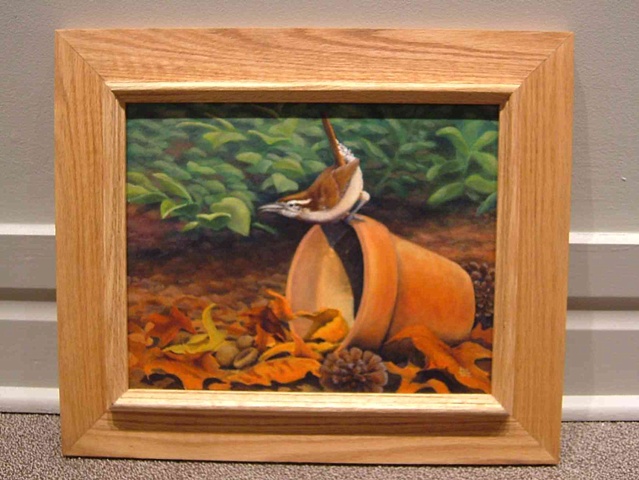Durham, NC
5/6/10 2:12 PM
Once upon a time photography competed to replace painting, and in many ways it has. Today, the nature enthusiast with an artistic bent more frequently turns to a hi-end digital camera than paint and brush. Matt Tomko, who creates careful oil-on-canvas studies of flora and fauna, is an exception to this rule, and it bears considering why this might be. Why paint when a camera captures nature with so much more precision and ease? Practices like Tomko’s suggest that there is a difference between seeing and looking, that a photographic reproduction might not in fact be the best way to communicate something about leaves changing color in the fall or a small bird perching delicately near the ground. By painting these scenes rather than snapping pictures of them, Tomko demonstrates the importance of close looking, of noticing the change in light and color as leaves rustle in the breeze, as a wren decides whether or not to hop off its perch. He illustrates this simply by the act of painting, where every brushstroke marks a decision made about what is and isn’t important. Because of this, however, every brushstroke counts, and some of Tomko’s come off as mushy or flat where he means and needs them to be magical and light. A flower pot, the twist of a branch register serenely and richly; foliage and feathers lack their natural crispness and individuality. It’s a matter of technique being up to the challenge of its subject, and nature is perhaps the most challenging yet necessary of these.
—Lori Waxman
